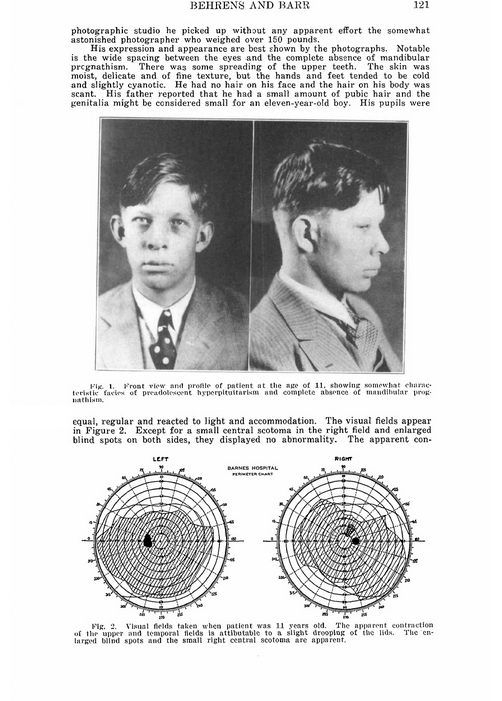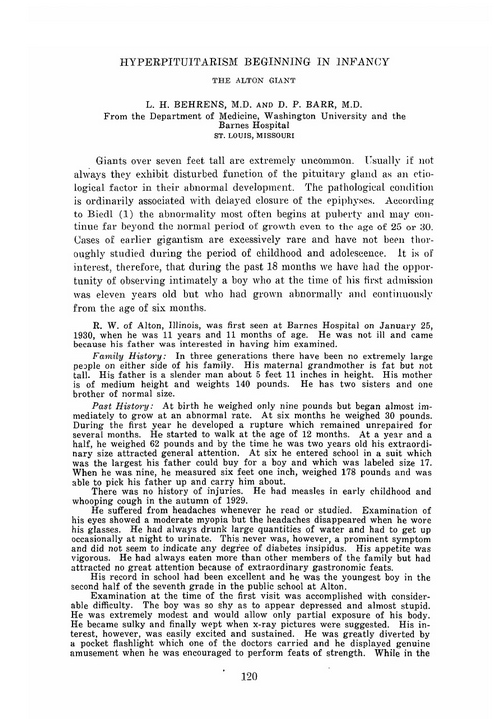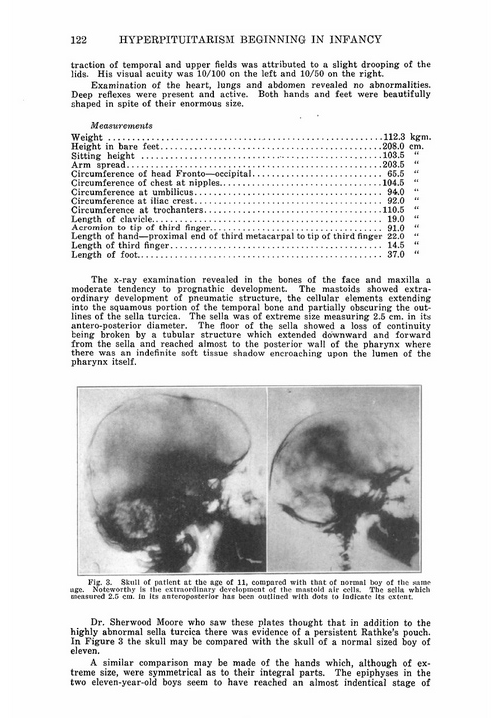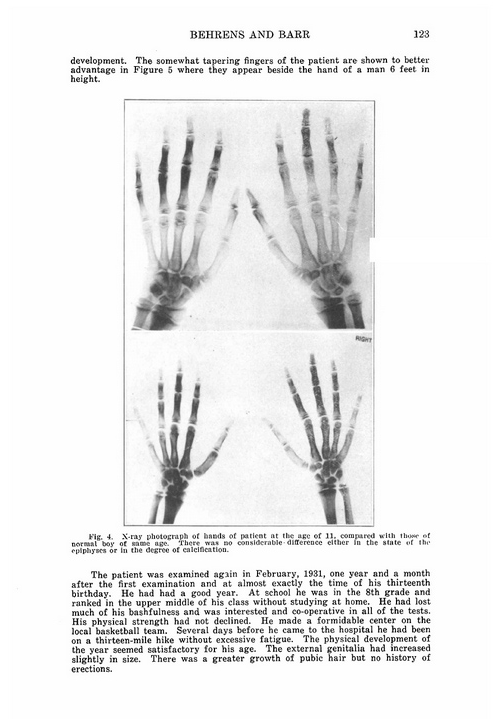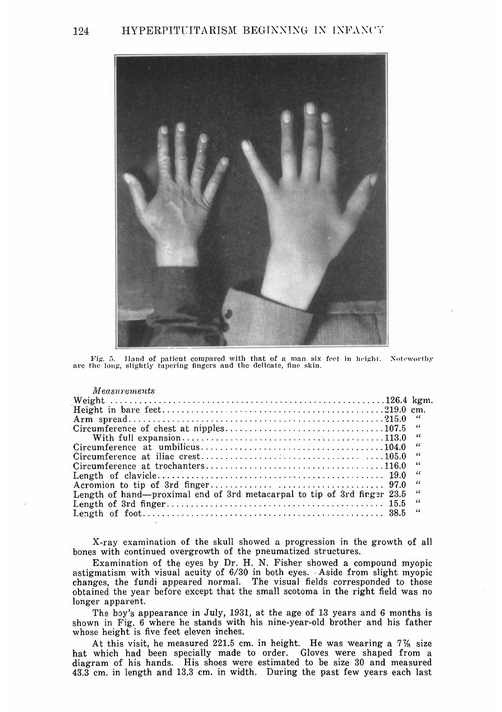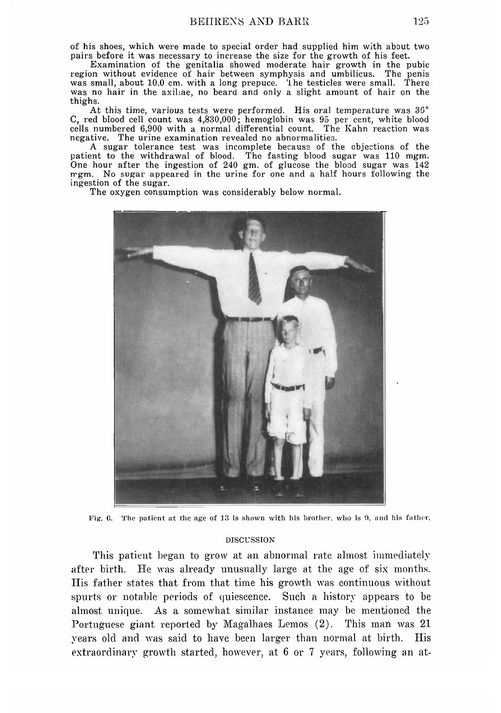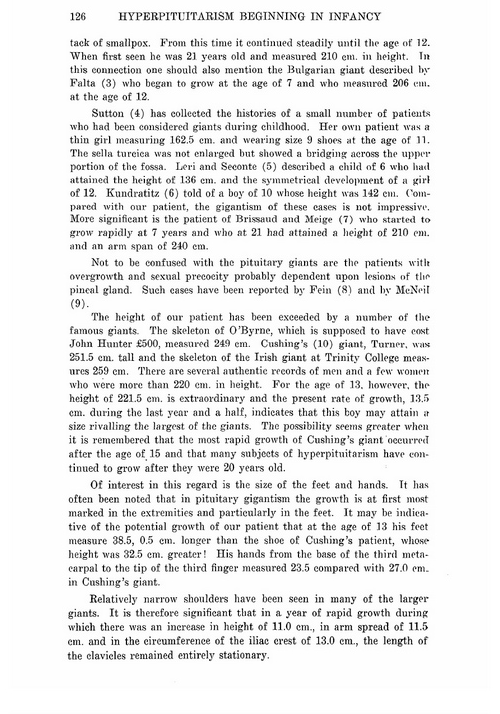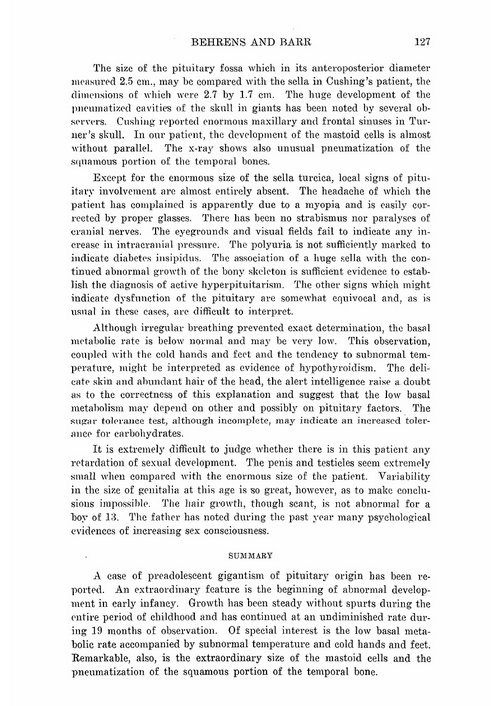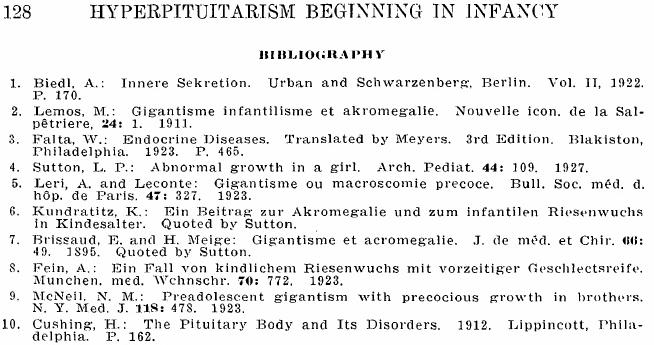In this post, I wanted to go back to look at the case of Robert Wadlow, who is documented as the tallest human in history verified by medical records.
In one of my older posts where I had looked at the unique case of Robert Wadlow entitled ”
Robert Wadlow, How Did He Grow So Tall?” I was not able to really understand the deeper physiological mechanics on why it seemed that he never even reached puberty which would have caused the process which would lead to his growth being eventually stopped.
I recently managed to find a PubMed study which looked at his case in a more scientific perpective entitled “HYPERPITUITARISM BEGINNING IN INFANCY THE ALTON GIANT“
From TheTallestMan.com forum Hyperpituitarism beginning in infancy. The Alton Giant 1932, the ENTIRE ARTICLE can be found on that thread.
From another TheTallestMan.com forum thread, here is Robert Wadlow’s height growth progression chart. I have copy and pasted the numbers below. (source is Robert Wadlow over the years (pictures and growth chart))
Growth chart:
- Birth: Height not recorded.
- Weight of 8.5 lbs. Perfectly normal.
- 6 months old: Height not recorded. Weight of 30 lbs. Very heavy for a kid his age, I’m guessing he was hitting the 2′ mark at the time.
- 1 year old: 45 lbs.
- 5 years old: 5’4″ frame and 105 lbs. Apparently he was already taller than his grandmother by that age. Pics at the time further back him up. Damn.
- 8 years old: 6′ and 169 lbs. Huge!
- 9 years old: 6’2″. About 195 lbs, based on mixed sources.
- 10 years old: This is where it starts getting really scary. He was about 6’5″ at the time, and weighed 210 lbs.
- 12 years old: Neared 7 feet, with a 6’11” frame and a 241 lbs body! Taller than a modern basketball player.
- 14 years old: 7’5″. Tallest Boy Scout ever recorded.
- 16 years old: 7’10”. 374 lbs.
- 18: 8’4″ and over 400 lbs.
- 20: 8’7″ and 488 lbs. Heavy.
- 21: 8’8″ and 492 lbs. A significant drop in weight followed the next year, possibly due to a health deterioration. This was the heaviest point in his life.
- 22.4: 8’11.1″ (2.72m) frame and 439 lbs. His death point. Tallest man ever recorded.
About a 3-5 in. growth rate per year! Mad tall, no wonder.
Pictures give us a more in-depth insight. His later years send a chill up my spine at how tall he is.
To get a bigger version of the study in PDF format, you can click HERE for the link to Scribd.
Analysis & Interpretation:
I think it is time to really see what the medical physicians who tested him say on the cause for his very unique case.
The first thing that is noted is that it seems that pituitary giants not only seem to have excess HGH being release, but that the mechanism might even cause them to delay the growth plate closure. This idea is something that I had in the early part of my research thought was not possible, but a few message from Tyler (of HeightQuest.com) seems to suggest that maybe the physiological phenomena of pituitary release of the somatropin somehow negatively regulates the estrogens from reaching the estrogen receptors contributing to the decrease of the chondrocytes in the resting zone of the growth plate, which is the real cause of growth plate senescence.
I had argued in previous posts like “Tanya Angus Is Proof That Height Increase Is Possible After Epiphyseal Plate Ossification” and “Sultan Kosen Is Proof That Height Increase Is Possible After Growth Plate Ossification” that these acromegalic giants somehow still seemed to be able to add at least 1-2 extra inches even in their late 20s and since most people have their growth plates close in the early 20s, that was clear evidence that somehow the excess HGH in their system was able to allow them to overcome the limitation of now cartilage to hypertrophize. It seems that I might be wrong about those early premature assumptions from the article I have clipped and pasted below.
Even very recently a regular reader of the website/blog named bdbuilder has the same argument for why adult height increase might be possible . How is it that these giants are still able to grow into their late 20s? are their bodies different or the body maturity rate different than normal people?
So what is the analysis on Robert Wadlow? What does the medical study on him reveal about his cause for his abnormal growth which might give us some possible clues?
The first thing is that there is no recorded instances of any body in Wadlow’s family being of extremely large stature. Everyone in his family was average sized. His father might have been slightly taller than the average height of the time, being in the early 1900s, at 5′ 11″ but that is still within normal range of height.
Robert was born of average weight, but his accelerated started almost immediately. By the time he was 9 years old he was already around 6′ 1″ with enough strength to carry his father around. He had bad vision suffering myopia, but glasses corrected for that. He did get headaches but wearing the glasses seemed to stop the headaches. He drank a lot of water which could signify a thyroid problem. There was no sign of him having diabetes.
At the first time he was taken to the doctors for examination at the age of 11 years old, he was already 6 feet 10 inches (2.08 meters). His face features were also noted. The spacing between his eyes were rather large. He showed to sign of mandibular prognathism. The hair on his body did show very little pubic hair, which might mean that he was going through puberty, which is normal for boys around the age of 10-12 which is when puberty usually starts for boys. However his genitalia was rather small in comparison to other 11 year old male adolescents. That means that the previous assumption made by me on the idea that Wadlow never went through puberty which means that he had unlimited height growth potential may be wrong. Maybe Wadlow did have a normal growth curve, and he would have stopped growing if he had lived past the 22 years of life he did have.
The X-Rays of his skull shows a lot of indications that he had the overdeveloped or tumour pressing on his pituitary gland. The sella turcica was being pushed to a large size. There seems to be evidence that a Rathke pouch still existed in the subject.
When an X-ray was done on his hands, it showed that his hands were very proportional compared to average hands, just everything being bigger. The growth plate cartilage in his hands and the rate of calcification aka the rate of bone maturity seems to be normal for the development.
After 13 months, Robert came back for another examination. His personality became more outgoing, his genitalia showed to be bigger, and the amount of pubic hair around his genitalia seems to have increased. At this age of 13, Robert was measured slightly less than 7 feet 3 inches tall. It is noted that his genitalia might still be smaller than usual, including his testicles. Hair had not really developed to his thighs or other areas between the legs and he didn’t have a beard. This could indicate that his rate of testosterone release into the system may be slower than average.
When he was tested on his heart, lungs, and blood tests, everything came out normal. It seemed that he did have a very low basal metabolic rate, a subnormal temperature, and cold hands and feet. His skin was very delicate with fine hair. The doctors guess that Wadlow most likely suffered from hypothyroidism due to the pituitary gland. The O2 consumption was lower than usual. His extremities, but especially his feet were abnormally large, which is usually a way to diagnose large stature or pituitary gigantism. His shoulder width seems to be proportionally small. From 1 year difference in comparison, his clavicle didn’t seem to increase in length. His sexual development seems to be slightly slow, but not too abnormal. He did show recent sexual consciousness as stated by his father at the age of 13.
The physicians note that wadlow seemed to be big from infancy, and grew at a very steady rate, with no growth spurts or times where growth slowed down dramatically. From my own diagnosis, it seems that Wadlow suffered from three main reasons why he grew so big.
- He did indeed have an overactive pituitary gland, from a very early age.
- His basal metabolic rate is very low with a low body temperature. This means the process of puberty and growth was not accelerated, meaning the senescence of the growth plates was very low.
- His genitalia is proportionally small suggesting testosterone was not being pumped into his system at even the average rate and then being aromatized and converted into estrogen which would lead to full growth plate closure eventually.
What is even more fascinating is that idea that the medical examiners say that there have been at least two cases where even lesions on the pineal gland can lead to gigantism. One of the articles seem to be in German and the other study is entitled “Preadolescent gigantism with precocious growth in brothers”
